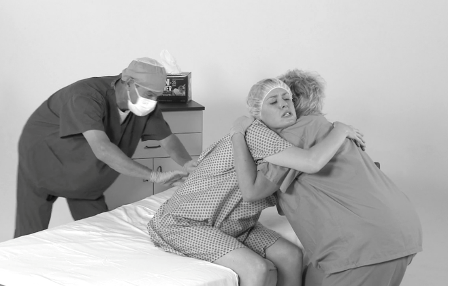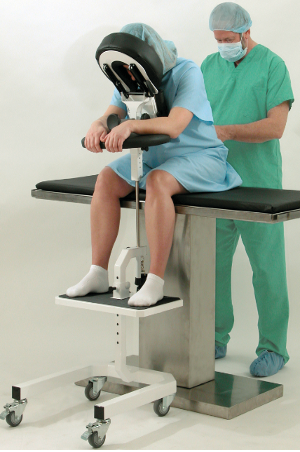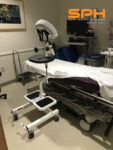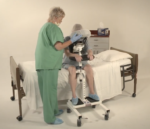Why use the Epidural Chair for Thoracentesis
Thoracentesis is an invasive procedure used to diagnose and medicate pleural effusions, during the treatment of a condition whereby excess fluid accumulates in the pleural space. Thoracentesis is used to manage symptoms like pain and shortness of breath. It relieves pressure in your lungs and provides epidural pain relief. The procedure also establishes the cause of the excess fluid found in the pleural space. Conditions such as tumors, lung infections, and heart failure are some of the causes of pleural effusions. This article offers you valuable information on the thoracentesis procedure and how the epidural chair can help the process.
Why is proper positioning important?
Patients are often encouraged to sit upright when the medical personnel performs the procedure. Sometimes women in pain during labor are encouraged to rest their hands on a pillow placed on a bedside table. It helps pulmonologists and sonographers access the posterior axillary space. That is a dependable part of the thorax and offers epidural pain relief to them.
Proper positioning is also vital for the safety of sick people. Hospitals should be guided by principles of Ergonomics when looking into their positioning. Ergonomics looks into the creation of tasks suited to worker’s capabilities. When used in handling the sick, it incorporates safety procedures and mechanical equipment used to move and lift them so that health care employees avoid manual exertions. Moreover, patient handling ergonomics maximizes their comfort and safety during movement.
How long is the procedure?
Thoracentesis is performed in a hospital by pulmonologists and sonographers. It usually takes 10 to 15 minutes. However, if an individual has a lot of fluid in their pleural space, it takes more than 15 minutes.
Why are nurses at risk of injury during this procedure, and why does the EPD benefit them?
One of the worst risk factors for nurse injuries during thoracentesis lies in moving and lifting patients. Manual  handling of the sick is amongst the leading cause of back injuries, especially in nurses. Most American states require hospitals to adhere to the Safe Patient Handling program. This program evaluates high-risk tasks in inpatient units like pushing, pulling, lifting, and prolonged static holds. It establishes solutions centered on lessening the risk.
handling of the sick is amongst the leading cause of back injuries, especially in nurses. Most American states require hospitals to adhere to the Safe Patient Handling program. This program evaluates high-risk tasks in inpatient units like pushing, pulling, lifting, and prolonged static holds. It establishes solutions centered on lessening the risk.
A nurse usually assists the patient to get into the proper position by moving around the bedside tray table and using the stool to offer support to their feet. During labor pain, they use a pillow to place the hands to ensure that they are comfortable. Nurses may trip if the bedside table is not locked securely. Therefore, risky positioning can contribute to unnecessary injury to patients and medical staff.
The Epidural Positioning Device benefits nurses in several ways. One of them is positioning the patient in a comfortable position that provides epidural pain relief faster. The nurse can help other health care personnel with other duties as they are not limited to holding the patient.
The device ensures that the sick person sits in the epidural chair steadily. That puts the nurse at ease when performing this procedure. It correctly positions the person who is ill since it is adjustable. Consequently, It helps the nurse to put them in the most optimal position. The epidural chair ensures there is no movement, which is crucial to nurses when conducting the procedure.
How does the Epidural Chair (Epidural Positioning Device) Help position Patients During Thoracentesis
The Epidural Positioning Device helps to solve risk factors attributed to administering the procedure and manual patient handling challenges. It assists in patient positioning to minimize unsafe manual patient handling that is being performed every day during this procedure. The EPD ensures a comfortable and relaxed flexed spine position for the patient while maintaining a stable position. Medical personnel recommend it for more than Thoracentesis including women in pain during labor, pain centers, and operating rooms. It also offers pain relief in the epidural as well as spinal relief.
The stand offers adjustable foot support to assist in patient positioning. It also has an adjustable mount for the epidural device that consists allows it to be attached directly to an operating table. The epidural chair reduces risk of errors, avoids accidents, improves patient comfort, and lowers injury risks to staff. These factors contribute to medical personnel satisfaction and patient outcomes. They are a comfortable and efficient option that guarantees the happiness of the sick and nursing staff.



